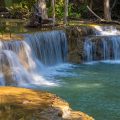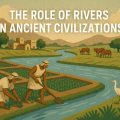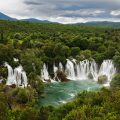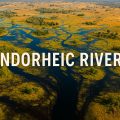The Chao Phraya: Bangkok’s Lifeblood and Its Secrets Unveiled
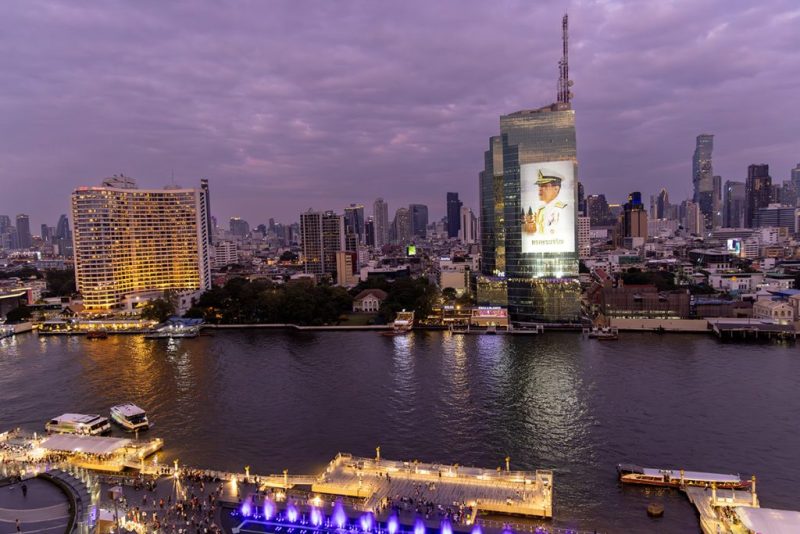
Glide along the Chao Phraya, Bangkok’s lifeline, and uncover hidden tales woven into its shimmering waters and bustling riverbanks.
The Chao Phraya, often referred to as the “River of Kings,” stands as the pulsating artery of Bangkok, Thailand’s vibrant capital. This majestic waterway, stretching 372 kilometers from the central plains to the Gulf of Thailand, has been the lifeblood of the city for centuries. Its serpentine course through Bangkok’s urban landscape offers a unique perspective on the city’s past, present, and future.
As one of the most significant waterways in Southeast Asia, the Chao Phraya has played a pivotal role in shaping the identity of Bangkok. Its banks are adorned with a tapestry of ancient temples, modern skyscrapers, and bustling markets, creating a captivating juxtaposition of old and new. The river’s influence extends far beyond its physical presence, permeating every aspect of life in the Thai capital.
For visitors and locals alike, the Chao Phraya serves as both a vital transportation route and a source of endless fascination. Its waters reflect the ever-changing face of Bangkok, from the glittering spires of Wat Arun to the neon-lit skyline of the financial district. As we delve deeper into the secrets of this iconic river, we’ll uncover the myriad ways in which it continues to shape and define one of Asia’s most dynamic cities.
Dive deeper into the fascinating world of Thailand’s rivers.
The Historical Significance of the Chao Phraya
The Chao Phraya’s rich history is inextricably linked to the founding and development of Bangkok. When King Rama I established the city as the new capital of Siam in 1782, he chose a site on the eastern bank of the river, recognizing its strategic importance for trade and defense. This decision would set the stage for Bangkok’s emergence as a thriving metropolis and cultural center.
Throughout the centuries, the Chao Phraya has witnessed the rise and fall of kingdoms, the arrival of foreign traders, and the transformation of Thailand from an absolute monarchy to a modern nation-state. The river’s banks have been home to successive generations of Thai royalty, with grand palaces and temples serving as enduring testaments to their power and influence.
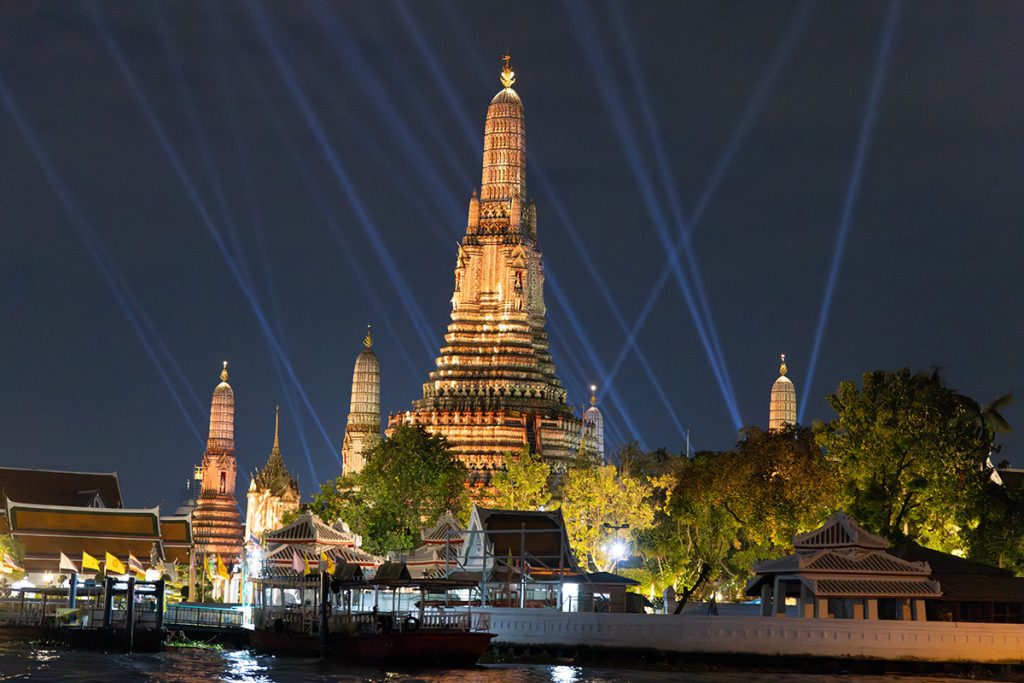
One of the most significant historical events associated with the Chao Praya was the signing of the Bowring Treaty in 1855. This agreement, negotiated on a British warship anchored in the river, opened Siam to international trade and marked a turning point in the country’s engagement with the Western world. The treaty’s impact can still be felt today in Bangkok’s cosmopolitan atmosphere and its status as a global business hub.
Exploring Bangkok’s Riverside Attractions
The banks of the Chao Phraya are dotted with some of Bangkok’s most iconic attractions, each offering a unique glimpse into the city’s rich cultural heritage. Among the most famous is the Grand Palace, a sprawling complex of ornate buildings that served as the official residence of Thai kings for 150 years. Adjacent to the palace lies Wat Phra Kaew, home to the revered Emerald Buddha, a statue carved from a single block of jade.
Across the river, the stunning Wat Arun, or Temple of Dawn, rises majestically from the western bank. Its central prang (spire) is adorned with intricate floral patterns made from colorful ceramic tiles, creating a mesmerizing sight when illuminated at night. Visitors can climb the steep steps for panoramic views of the river and the city beyond.
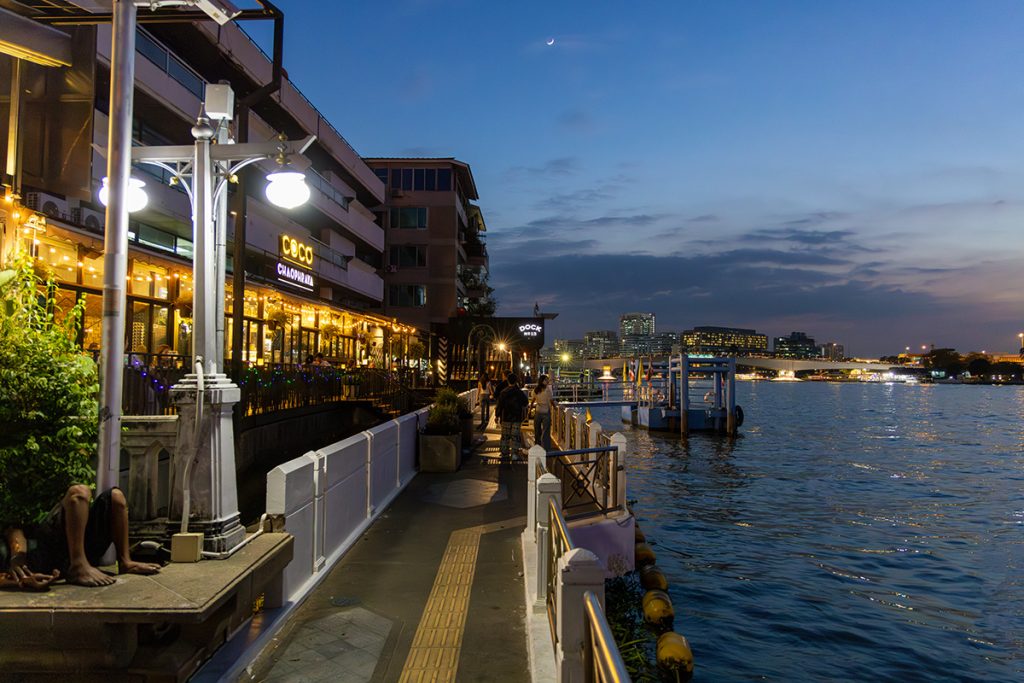
For those interested in Thai history and culture, the Bangkok National Museum houses an extensive collection of artifacts spanning thousands of years. The nearby Siriraj Medical Museum offers a more unusual experience, with its fascinating (and sometimes gruesome) exhibits on human anatomy and forensic science.
Chao Phraya River Cruises: A Must-Do Experience
No visit to Bangkok is complete without experiencing the Chao Phraya from the water itself. River cruises offer a unique perspective on the city’s skyline and provide a refreshing respite from the bustling streets. Visitors can choose from a variety of options, ranging from simple ferry rides to luxurious dinner cruises aboard traditional rice barges.
One popular cruise route takes passengers past many of Bangkok’s most famous landmarks, including the Temple of Dawn, the Grand Palace, and the iconic Rama VIII Bridge. As the boat glides along the water, guests can marvel at the contrast between ancient temples and modern skyscrapers, all while enjoying the cool river breeze.
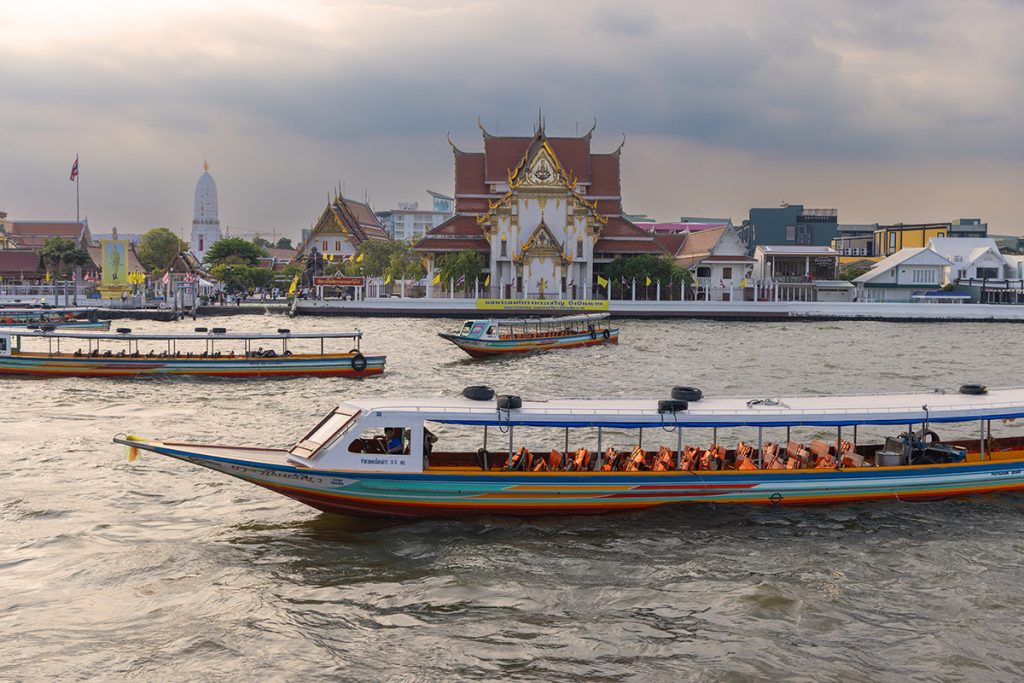
For a more immersive experience, consider taking a long-tail boat tour through the smaller canals, or klongs, that branch off from the main river. These narrow waterways offer a glimpse into traditional riverside communities, where locals still live in wooden stilt houses and travel primarily by boat.
The Role of the Chao Phraya in Bangkok’s Economy
The Chao Phraya has long been a crucial artery for trade and commerce in Bangkok. In the past, floating markets were a common sight along the river, with vendors selling fresh produce and goods from their boats. While many of these markets have now moved to land, the river continues to play a vital role in the city’s economy.
Today, the Chao Phraya serves as an important transportation route for both goods and people. Large cargo ships can be seen navigating the river, carrying everything from rice and textiles to electronics and machinery. The river’s ports handle a significant portion of Thailand’s imports and exports, contributing to the country’s status as a major regional trading hub.
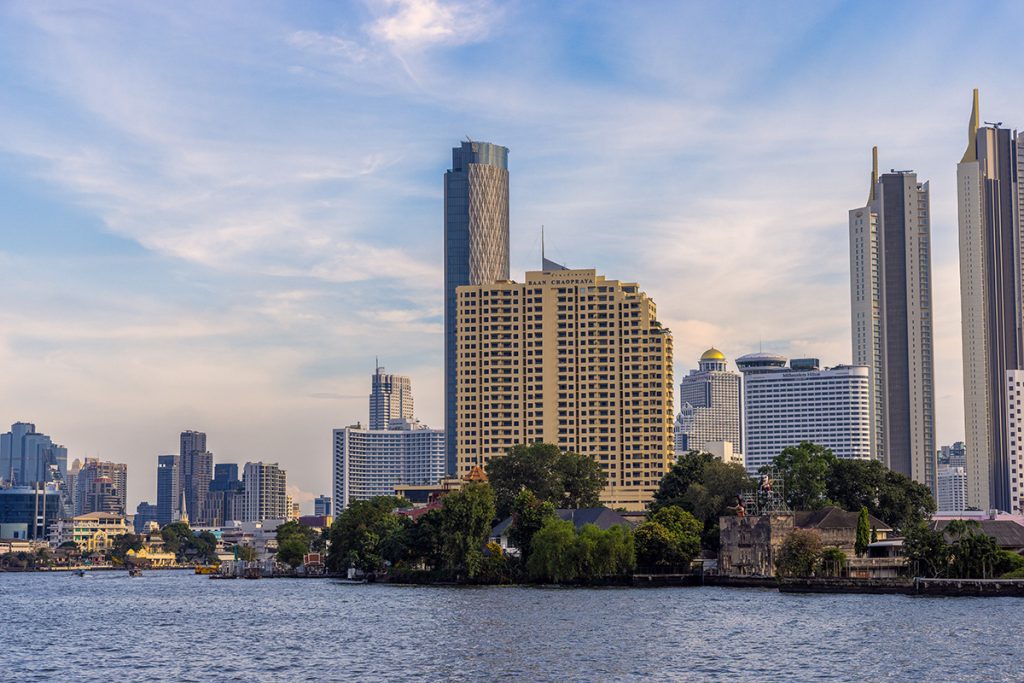
The tourism industry has also flourished along the Chao Phraya’s banks. Luxury hotels, rooftop bars, and riverside restaurants cater to visitors seeking to experience the magic of Bangkok from the water’s edge. River cruises and water taxi services provide employment for many locals, while also offering tourists a unique way to explore the city.
Ecological Importance and Conservation Efforts
Despite its urban setting, the Chao Phraya plays a crucial role in maintaining the ecological balance of the region. The river and its tributaries support a diverse array of flora and fauna, including several endangered species. However, rapid urbanization and industrialization have taken their toll on the river’s ecosystem, leading to concerns about water quality and biodiversity loss.
In recent years, there has been a growing awareness of the need to protect and preserve the Chao Phraya. Government agencies and environmental organizations have launched various initiatives aimed at reducing pollution, restoring habitats, and promoting sustainable development along the river’s banks.
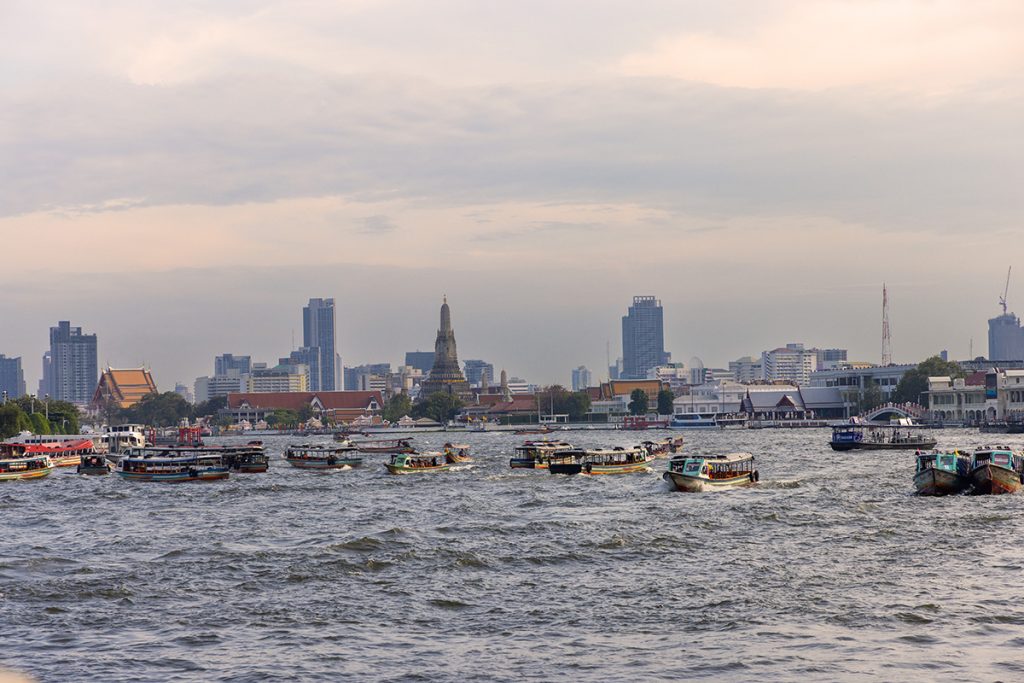
One notable project is the Chao Phraya for All initiative, which seeks to create green spaces and public parks along the riverfront. This ambitious plan aims to improve water quality, enhance biodiversity, and provide Bangkok residents with greater access to nature within the city.
Hidden Gems Along the Chao Phraya’s Banks
While many visitors are familiar with the Chao Phraya’s most famous attractions, the river’s banks are also home to numerous hidden gems waiting to be discovered. One such treasure is the Baan Silapin, or Artist’s House, a 200-year-old teak building that now serves as a cultural center and puppet theater. Here, visitors can watch traditional Thai puppet shows and participate in art workshops.
Another off-the-beaten-path destination is the Kudi Chin community, one of Bangkok’s oldest neighborhoods. This area is known for its unique blend of Thai, Chinese, and Portuguese influences, reflected in its architecture and cuisine. Visitors can explore narrow alleyways lined with colorful shophouses and sample local delicacies like Portuguese-style cupcakes.
For those seeking a peaceful retreat from the city’s hustle and bustle, the Bangkok Tree House offers an eco-friendly oasis on the river’s edge. This unique hotel, accessible only by boat, features treehouse-style rooms and a commitment to sustainable tourism.
Local Life and Culture on the River
The Chao Phraya is not just a scenic backdrop for tourists; it remains an integral part of daily life for many Bangkok residents. Traditional fishing communities can still be found along the river’s banks, where generations of families have made their living from the water. These communities maintain age-old customs and rituals, offering a glimpse into a way of life that has remained largely unchanged for centuries.
One of the most colourful expressions of local culture on the Chao Phraya is the annual Loy Krathong festival. During this celebration, thousands of people gather along the riverbanks to release small floats adorned with flowers, candles, and incense. The sight of these twinkling krathongs drifting down the river is a magical experience that encapsulates the spiritual connection between the Thai people and their beloved waterway.
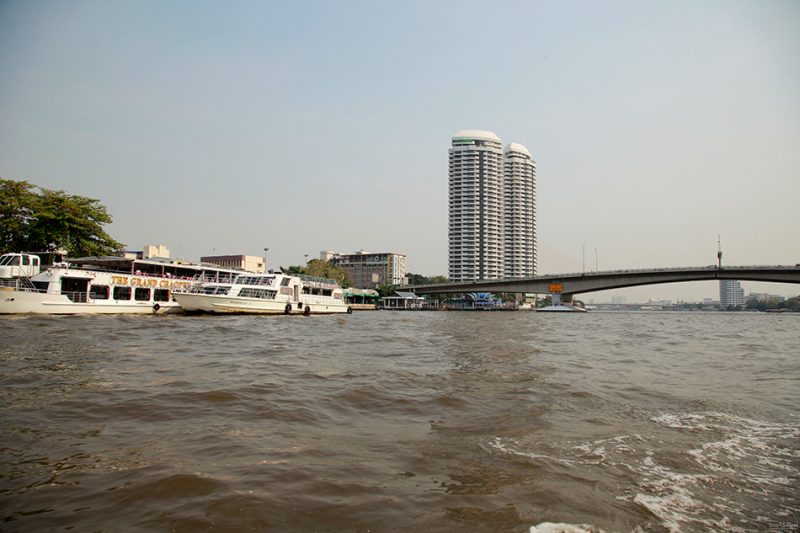
The river also plays a central role in many religious ceremonies and royal processions. The Royal Barge Procession, a spectacular event featuring ornately decorated boats, takes place on the Chao Phraya to mark special occasions in the Thai royal calendar.
Chao Phraya’s Influence on Bangkok’s Urban Development
The Chao Phraya has been a driving force in shaping Bangkok’s urban landscape since the city’s founding. Initially, development was concentrated along the river’s banks, with canals serving as the primary means of transportation. As the city grew, land reclamation projects and the construction of roads gradually shifted the focus inland.
In recent decades, there has been a renewed interest in riverfront development. High-rise condominiums, luxury hotels, and shopping centres have sprung up along the Chao Phraya, transforming the skyline and attracting both residents and tourists to the waterfront. This trend has not been without controversy, as some critics argue that it has led to the displacement of traditional communities and the loss of historic buildings.
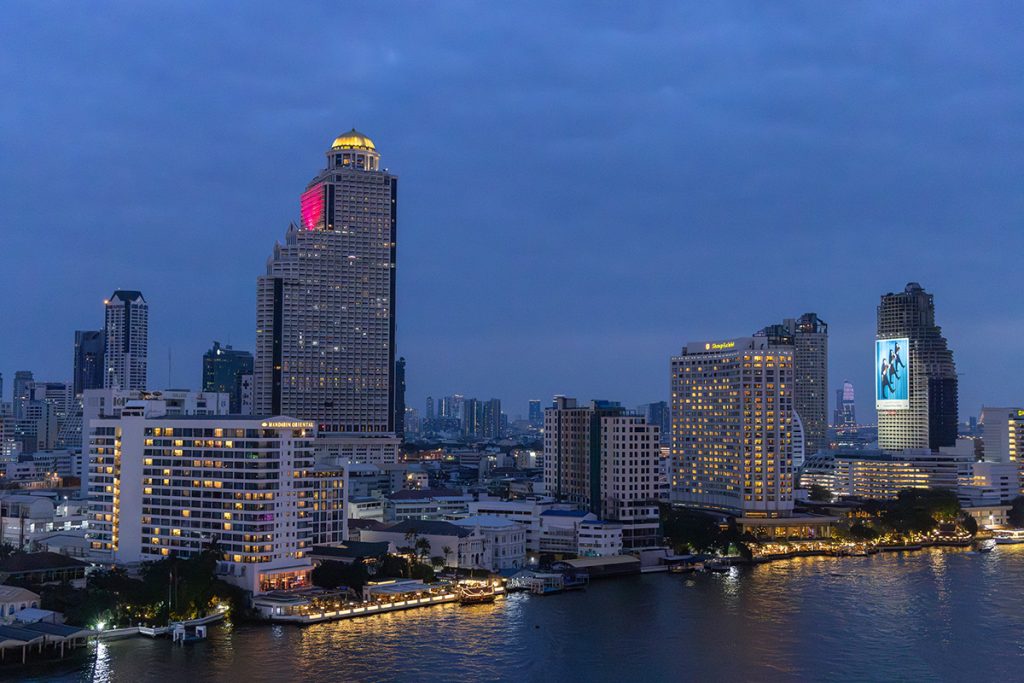
Urban planners and architects are now grappling with the challenge of balancing development with preservation along the Chao Phraya. Initiatives such as the Chao Phraya Promenade project aim to create public spaces that celebrate the river’s heritage while accommodating modern needs.
Best Times to Visit and Experience the Chao Phraya
While the Chao Phraya can be enjoyed year-round, certain times of the year offer particularly memorable experiences. The cool season, from November to February, is generally considered the best time to visit Bangkok. During these months, the weather is more comfortable for outdoor activities, and the clear skies provide excellent visibility for river cruises and photography.
The Loy Krathong festival, usually held in November, is a magical time to experience the Chao Phraya. The sight of thousands of candle-lit krathongs floating on the water creates an unforgettable atmosphere. Another spectacular event is the Royal Barge Procession, which takes place on special occasions and features a flotilla of ornate royal barges gliding down the river.
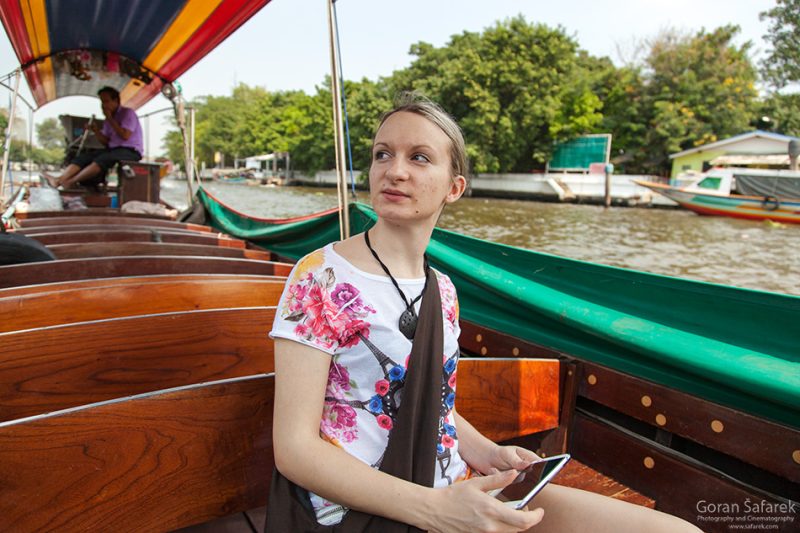
For those interested in local culture, visiting during the Thai New Year (Songkran) in April offers a unique perspective on the river’s importance. While the famous water fights take place throughout the city, many people also visit temples along the Chao Phraya to make merit and participate in traditional ceremonies.
Photography Tips for Capturing the River’s Beauty
The Chao Phraya offers endless opportunities for stunning photography, from sweeping cityscapes to intimate portraits of river life. Here are some tips for capturing the river’s beauty:
- Golden Hour Magic: The hour after sunrise and before sunset provides warm, soft light that’s perfect for photographing the river and its surroundings.
- Reflections: Look for calm areas of water to capture beautiful reflections of the city skyline or temples.
- Long Exposures: Use a tripod and slow shutter speeds to create smooth, silky water effects, especially at night when the city lights come alive.
- Local Life: Don’t just focus on landmarks; capture the daily activities of people living and working along the river for a more authentic perspective.
- Unique Vantage Points: Explore different viewpoints, such as rooftop bars, bridges, or ferry boats, to find fresh angles on familiar scenes.
Future Plans and Developments for the Chao Phraya
As Bangkok continues to evolve, so too does its relationship with the Chao Phraya. Several ambitious projects are currently in the planning or implementation stages, aimed at enhancing the river’s role in the city’s future development:
- The Chao Phraya Gateway: This large-scale urban renewal project aims to transform a 14-kilometre stretch of riverfront into a series of public spaces, including parks, walkways, and cultural centres.
- Improved Transportation: Plans are underway to expand and modernize the river’s ferry system, making it easier for commuters and tourists to navigate the city by water.
- Flood Prevention: In response to the devastating floods of 2011, authorities are implementing comprehensive flood management strategies, including the construction of new drainage tunnels and water retention areas.
- Sustainable Tourism: Efforts are being made to promote eco-friendly tourism along the Chao Phraya, with a focus on preserving local communities and protecting the river’s ecosystem.
These initiatives reflect a growing recognition of the Chao Phraya’s importance not just as a natural resource, but as a vital component of Bangkok’s identity and future prosperity.
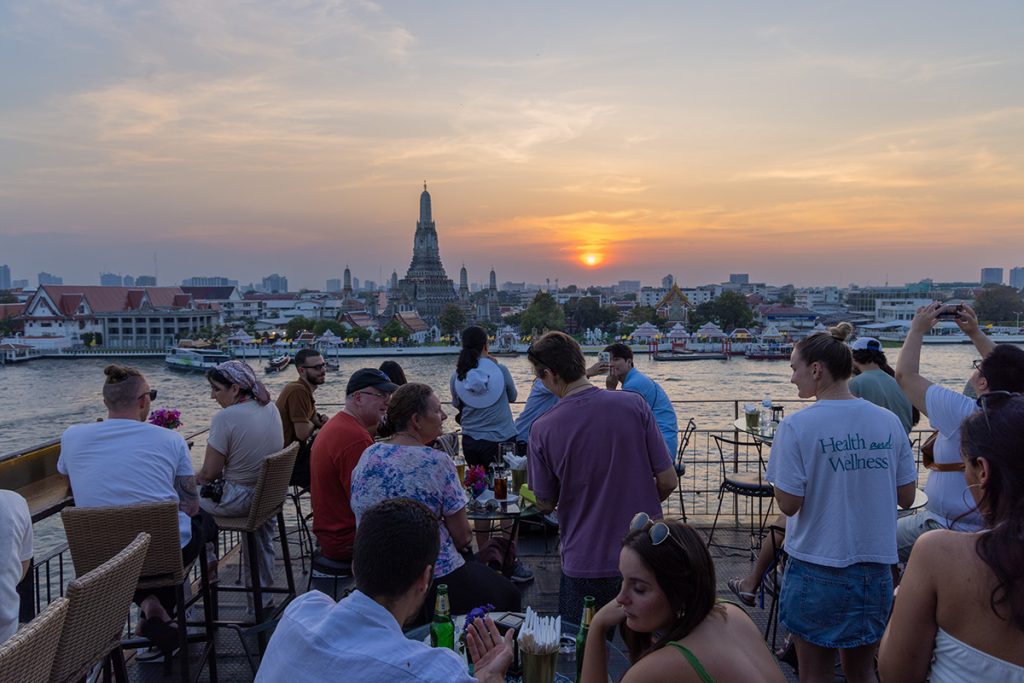
Conclusion: The Enduring Legacy of Bangkok’s River of Kings
The Chao Phraya, with its rich history and vibrant present, continues to be the lifeblood of Bangkok. From its role in shaping the city’s urban development to its importance in local culture and traditions, the river remains an integral part of life in the Thai capital. As Bangkok looks to the future, the Chao Phraya will undoubtedly play a crucial role in defining the city’s identity and guiding its growth.
For visitors, the river offers a unique perspective on Bangkok’s past, present, and future. Whether cruising its waters, exploring its hidden gems, or simply admiring its beauty from the shore, the Chao Phraya provides an unforgettable experience that captures the essence of this dynamic city.
As we’ve uncovered the secrets of the Chao Phraya, it becomes clear that this majestic waterway is more than just a geographical feature – it is the heart and soul of Bangkok, a living testament to the city’s enduring spirit and endless capacity for reinvention.
Experience the magic of the Chao Phraya for yourself! Book a river cruise today and discover the hidden gems, rich history, and breathtaking beauty of Bangkok’s iconic waterway. Don’t miss out on this unforgettable journey through the heart of Thailand’s captivating capital.
